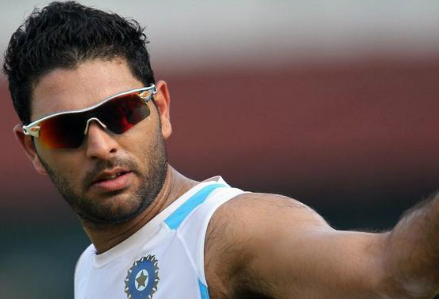Going beyond celebrity illness
The mainstream media, which have shown unabashed obsession with celebrity illness in the recent past, fight shy of portraying the larger picture of health care of the Indian people.
ARCHANA VENKAT suggests guidelines be put in place to help journalists focus on health care issues
_150_200.jpg)
The last few days have seen not just social media but also mainstream media abuzz with the news of cricketer Yuvraj Singh’s illness. Even Justice Katju seems to have no opinion on how the media should cover celebrity health – whether it is Kareena Kapoor’s Size Zero or Ranbir Kapoor’s recent cyst removal operation or Sonia Gandhi’s much-publicised “treatment” in the US.
What is our obsession with detailing celebrity illness when we show little propensity to cover public health care? Do celebrities deserve scrutiny of their medical health? One may argue that there is precious little that needs to be respected and regulated when it comes to celebrities. If that be the case, giving superficial coverage to health issues, which are neither life threatening nor have larger implications for the public at large, only results in waste of space.

Instead, the media can choose to be intelligent and do more impactful stories using the celebrity angle (if they have to) as a peg. For instance, Yuvraj Singh’s illness and its progress, could have been covered more deeply by assessing why he had to seek treatment in the US. That would have highlighted two issues: that of health care data security laws in the US which forbid anyone from sharing details pertaining to their illness, and India’s mediocre capabilities in the field of oncology. Both these story angles, if explored properly, would have yielded at least three analytical pieces leading up to whether India’s data security laws need to include health care-related information and if so, how we can ensure that these laws are respected by the media.
Another scenario that could have been wisely explored was Aishwarya Rai’s normal delivery. Instead of lauding her for the feat (given her age and the celebrity predisposition to opt for surgery), a deeper story around why there has been a rise in C-Section deliveries in India over the past three to five years would have been an eye-opener. Not only would this have shed light on the technological advances in gynecology and obstetrics but also provided a perspective on human evolution and corresponding lowering of the pain threshold.
If journalists want to do lighter stories, they can also use the information in health magazines featuring celebrity diets and fitness routines. Not only are celebrities willing to talk on these issues but they are more forthcoming these days to discuss the pitfalls and challenges associated with following any of these routines. For good measure, celebrity advice can be crosschecked with what their trainers or other healthcare experts say.
The fact that the media doesn’t want to go this extra mile highlights a disturbing trend: short sightedness and underestimating the shelf-life of a story idea. During my stint as a journalist I came across only a few industry colleagues who could understand and cover the health care beat. With only a rudimentary background in science, these journalists had spent years on the beat talking to doctors and health care experts, simplifying the medical jargon and dissecting pubic propaganda. As a result they could see the implications of small developments and chose to do insightful stories – with or without celebrity inputs.
While we should ideally be emulating these veteran journalists, who could pass on some tips to the younger generation, media bodies (regulatory or otherwise) need to put in place certain guidelines or rules that can help journalists seek the right kind of stories. I came across one such set of guidelines on the webpage of the Association of Healthcare Journalists. They also have guides that specifically focus on aspects such as covering hospitals, medical health, local nursing homes, accessing data from governmental records as well as specific conditions such as obesity. Another site actually points out common mistakes journalists make while covering health care news and shows how to self-evaluate one’s story to ensure it is worthy of publication.
In the Indian context, publications can arrange for medical professionals to give brief lectures on how to decipher the meaning of medical data and terminology. They can also attend healthcare-related events to understand the emerging trends. As of now, only public relations professionals handling health care clients organise meetings with the media to create awareness, primarily on their client’s activities, and only as a secondary measure on public health care.
Cub reporters, who are assigned beats such as politics, municipality, and crime usually undergo a week’s training and shadow their seniors to understand the complexities of the beat. They are also allowed to file stories under the supervision of these seniors to ensure that they understand the sensitivities in handling information pertaining to such beats so that no assumptions or baseless inferences are drawn with the available facts. Perhaps news organisations need to include a similar training programme for reporters covering public health care.
As a next step media regulatory and representative bodies such as PCI, Editor’s Guild, NBA etc., should design and recognise certification programmes for covering public health care similar to the current system of accrediting journalists. This will help smaller news organisations which do not have the resources to train their journalists in-house.
In today’s appearance-conscious and glamour-driven era, it is important that core health care issues find adequate space in mainstream media. While there are several magazines that have dedicated supplements focused on lifestyle diseases and treatments, very few focus on public health issues such as malnourishment and infant mortality. While some may justify that we need a medical update on Yuvraj Singh’s condition, it is equally necessary to get an update on India’s efforts to curb polio and measles.